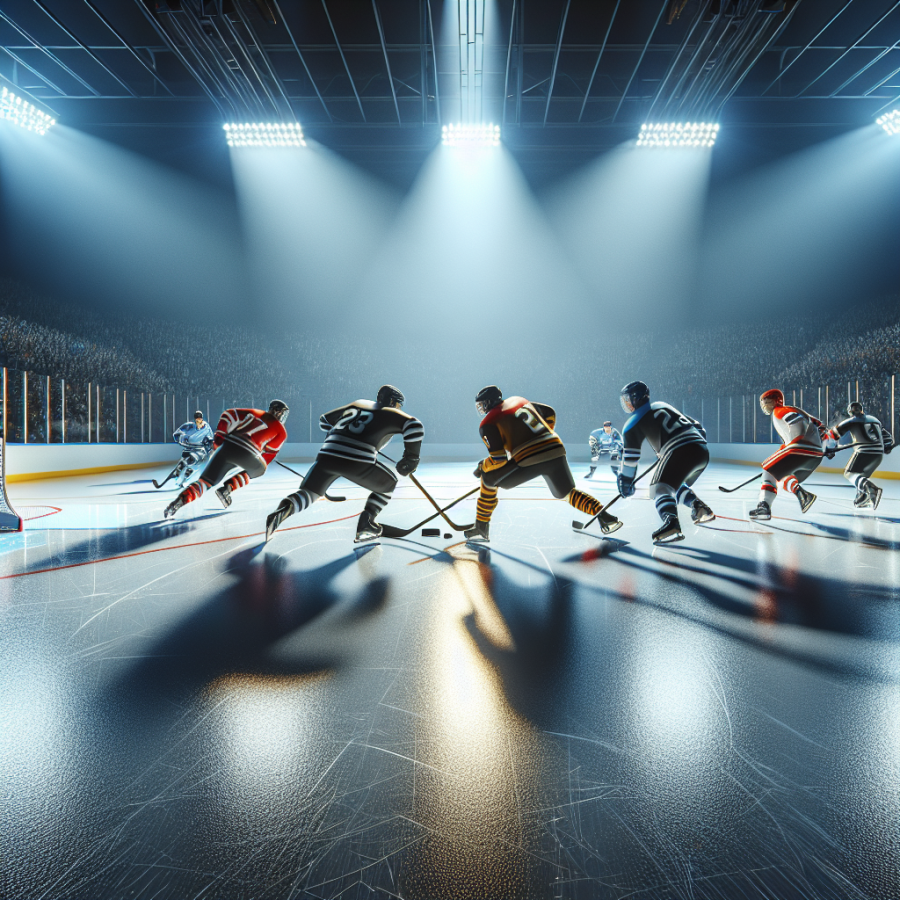Breaking the Barriers of Seasonality: Year-Round Hockey Practice on Synthetic Ice
Skating on ice is an essential skill for any hockey player, central to every aspect of the game, from the basic mechanics to the most advanced maneuvers. But natural ice has its limitations—it's seasonally dependent, requiring cold weather, which limits access for athletes who want to train year-round. Enter the synthetic ice revolution: this remarkable surface is changing the game for hockey players worldwide, providing them with the opportunity to hone their skills regardless of the season or location.
Synthetic ice, constructed from high-density polyethylene or ultra-high-molecular-weight polyethylene, allows for the replication of ice-skating experiences without the need for sub-freezing temperatures. Its unique design enables the plastic to imitate the properties of frozen water, offering sufficient resistance and glide, which closely approximate the feeling of real ice. As a result, hockey players can commit to extensive practice sessions at any time of year, breaking the barriers of seasonality that once confined them to traditional rinks and winter months.
The summer off-season has traditionally been considered a downtime for ice hockey players, but this no longer needs to be the case. Rather than being a period of decreased activity, the off-season can become a time for athletes to continue developing their skills by practicing on synthetic ice. This allows for continuous improvement and prevents the loss of skill and conditioning that can occur during extended breaks from practicing on ice.
Moreover, synthetic ice isn't bound by geographic constraints. Players living in warmer climates, who may previously have had limited opportunities to practice ice hockey, now find that these artificial surfaces allow for local, accessible training. Whether installed in a small home practice area, a backyard, or a community center, synthetic ice panels can be customized to fit available spaces, making hockey practice more inclusive and widespread.
The year-round training facilitated by synthetic ice can also accelerate skill development. With the ability to practice stickhandling, shooting, and skating techniques daily, players can master the fine details of hockey much faster. This continuous access to a skating surface helps players become more agile, coordinate, and strategic, complementing their on-ice training during the regular season.
Furthermore, as synthetic ice technology advances, its performance continues to improve. The modern synthetic ice of today offers a smoother skating experience with lower resistance, greater similarity to real ice, and less wear on skate blades. Some variants even have self-lubricating features, reducing the need for liquid enhancers that were once necessary to improve glide.
Read also:
Navigating Your Choices: How to Determine the Right Golf Glove for You
Enhancing Skill Development with High-Tech Synthetic Ice Surfaces
Enhancing skill development in hockey athletes has seen a remarkable transformation with the advent of synthetic ice surfaces. These high-tech materials are designed to mimic the glide and resistance of natural ice, offering a practical and highly beneficial alternative to traditional rinks. Their use is revolutionizing the approach to hockey training, both in terms of accessibility and the quality of skills that players can develop.
The synthetic ice is composed of interlocking panels made from a polymer material that can be installed virtually anywhere, from a backyard to a basement, garage, or training center. This flexibility means that players can practice year-round, regardless of weather conditions or rink availability. For skill acquisition, this translates into more hours on the "ice," allowing players to repetitively work on their skating techniques, stickhandling, shooting, and passing without the hindrance of limited ice-time.
One of the key aspects of skill development on synthetic ice is the slight increase in resistance compared to natural ice. Although high-quality synthetic surfaces are designed to be incredibly similar to frozen water, they do require extra effort for gliding and maneuverability. This resistance actually benefits players by engaging their muscles more intensively, leading to enhanced strength and endurance. When transitioning back to real ice, athletes often notice an improvement in speed and agility due to the conditioning received on these artificial surfaces.
Another vital advantage of synthetic ice is the ability to focus on technical skills in isolation. Players can spend considerable time perfecting specific maneuvers or techniques without the interruptions common in public skating sessions. For instance, a forward can work on one-timers or a defenseman might drill backward crossovers repeatedly, refining their movements to become more precise and instinctual. The consistent surface quality of synthetic ice also ensures that players get a reliable experience every time they train, which is fundamental for skill acquisition and reinforcement.
Furthermore, synthetic ice surfaces promote a safer learning environment. Since they can be deployed in a controlled space, the risk of collision with other skaters is greatly reduced, allowing players, particularly youngsters, to experiment and push the boundaries of their abilities without the fear of serious injury. Coaches too find it easier to provide immediate feedback, as they can observe and correct techniques closely, ensuring proper form and preventing bad habits from taking root.
For goaltenders, synthetic ice presents unique training opportunities. Goalies can work extensively on their movements between the posts, such as lateral slides, butterfly drops, and recoveries. The consistent surface offers a perfect scenario to enhance muscle memory through repetition.




